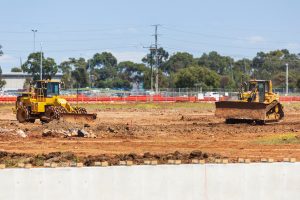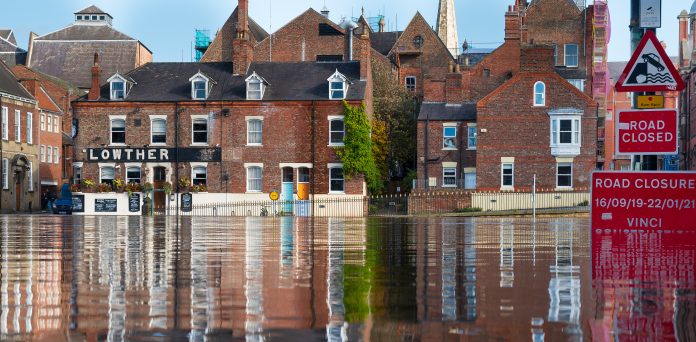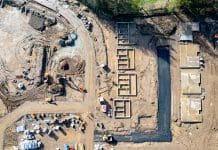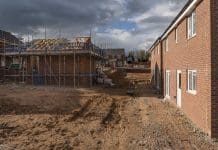From location to geospatial systems, Piers Edgell, account director at Landmark Information explores the considerations of environmental risks in construction projects
For new construction projects, the location has of course always been a crucial element. By this, I don’t just mean the actual geographic position but its locational context in relation to neighbouring surroundings and the physical environment. Advances in geospatial systems and data are continually revealing new insights about the spaces we live, work and invest in.
For a development design to truly come to life, there must be continuity between the virtual concept and the reality of what is possible – both from a physical and financial point of view – and it is this vital role that planners, architects, surveyors, engineers, geotechnical and geomatics professionals adopt.
Data intelligence is a key linchpin to any project’s success. When armed with the power of location data, the right decisions can be made at every stage to understand – and overcome – any risks that are presented. And, by representing risks geospatially is how we can start to overcome them.
It falls to construction, architectural, engineering and development firms on making the land ‘work’ for development purposes. Therefore, ensuring that the appropriate due diligence has been undertaken regarding environmental factors at the outset could save a lot of costly surprises in the long-run.
It is also important to understand any former usage of the site to assess whether there is the potential for any contaminants to be present, and if so, whether any special measures or remediation is required ahead of development.
Having access to a wealth of digital data that can be scrutinised online as part of a project will therefore provide contextual information relating to the physical surroundings of the area. This could include assessing current and historic maps, land use constraints information, geological data, and historical land features, through to local plans, planning applications, and environmental data – such as flood risk or ground stability analysis.
By doing so, you are less likely to discover ‘the unknown’ too late into the land acquisition, assessment or subsequent construction process, and can adapt designs, plans or undertake further investigations as needed, without unnecessarily creating delays.
What should you consider?
Flooding
Having insight into flood risk – both now and in the future is increasingly important as we are experiencing wetter winters and increased incidences of extreme weather conditions.
The extent of flood risk modelling techniques provide an overview of extents, depths and flow directions to support planning and range across flood sources; groundwater, surface water, river or coastal.
But a look to the future is crucial within our planning processes. The first national flood map for climate change is also available, which provides probabilistic climate predictions in order to model future flood risk as far ahead as the 2080s. This includes future flood maps, predictions of erosion, and the future risk to transport, all of which help towards planning sustainable and future-proofed developments.
Ground stability
 Although not necessarily apparent to the naked eye, it pays to check whether the location has been subject to any historical activities that may have created potential environmental risk.
Although not necessarily apparent to the naked eye, it pays to check whether the location has been subject to any historical activities that may have created potential environmental risk.
For example, any manmade shafts, pits, tunnels or such subterranean features which may have been created as a result of historical mining or quarry activities.
Reviewing historic data with local records will provide a good indication, while also taking into consideration the land’s geology to understand any natural land movement or subsidence risks.
Contaminated land
Sources of contamination can vary greatly, including some naturally occurring substances such as radon, arsenic or lead, through to the legacy of our industrial past. Suggestions include former service stations, landfill sites, dry cleaning factories, gas works or waste disposal.
Common examples of contaminants include asbestos, heavy metals in the soil, arsenic in wastes from gas works and chemical solvents polluting aquifers used as a drinking water supply.
Any disturbance to the land may result in dormant substances coming to the fore and potentially creating a hazard to public health, ecosystems, wildlife, water sources or even carrying a environmental risk of fire or explosion, with resulting litigation or clean-up costs. As such, upfront data analysis is paramount.
With the Environmental Protection Act 1990 legislation, local councils and landowners are required to readily provide more information, meaning it is now becoming easier to uncover details relating to former land usage.
All local councils have an obligation to keep a ‘Contaminated Land Register’, which should include remediation notices, remediation declarations/statements, appeals against Notices, designation of special sites, notification of Claimed Remediation, and details of any convictions for related offences.
The Environment Agency also has responsibility to oversee ‘special sites’ that are considered ‘heavily contaminated’. A helpful guidance paper has been produced that includes a detailed workflow of the steps that should be taken, from risk assessment through to audit and remediation.
By accessing historical mapping data, you can quickly identify former industrial buildings, quarries, landfill, worksites, gasworks or similar. By analysing these with current maps and aerial views you instantly visualise how a site has changed.
Unexploded ordnance
Although the potential risk of Unexploded Ordnance (UXO) may be considered small, the safety of the team involved on any project – not to mention the neighbouring population – is a priority.
Preliminary risk assessments calculate the probability of unearthing explosive remnants at a given location. Such desktop reports search through a wide range of maps and datasets to determine the risk of encountering UXO, including researching bomb census maps, bomb damage maps, Luftwaffe reconnaissance photographs, post-War RAF aerial photographs, plus mapping key locations of historical explosive manufacturing sites, military areas, and WWII bombing decoy sites, to name just a few.
If further investigation is needed, a second digital assessment – a ‘Detailed UXO Risk Assessment’ – can then be undertaken, providing more quantifiable risk assessment that takes into account the probability of the threat and the potential consequences.
The extent of the data offered in the assessment report provides a solid basis on which to form an approach and to commence any action, as needed.
Mining risk
Did you know that in 2019, almost a quarter (23%) of property transactions took place in a coal affected area? Data shows that in fact over 10 million properties are situated in a coalfield area, representing 27.4% of all properties in GB. This is higher than many people would realise and of course the risks posed by this include the potential for future subsidence.
Data is today available that enables full and thorough due diligence checks to assess if a given address or site location has the potential to be within a mining risk zone.
Underground assets
Understanding the features that lie below the surface is crucial before any excavations, designs or developments commence. The last thing you want to do when breaking new ground at a site is to disturb any utility infrastructure hidden below the surface. Utilities-based searches are therefore available which provide details of gas and oil pipelines, electricity cables, telecommunication wires, mains water supplies, sewers and fibre-optic cables, to name a few.
Today, the wealth of data available combined with sophisticated online tools and GIS, enables us to have greater intelligence on any plot of land than ever before. And, with responsibility ultimately falling at the feet of developers to ensure that a planned project is viable, safe and the land is appropriate for its intended use, it is crucial that the right data is assessed at the outset to identify any hidden environmental risks so appropriate measures are undertaken at the outset.

Piers Edgell
Account director – Environment & mapping














